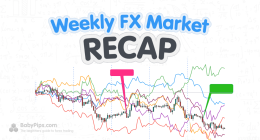
March 5, 2019 5 min read
Opinions expressed by Green Entrepreneur contributors are their own.
When I first discovered CBD, I knew I had to share its remarkable health benefits with other people. I was aware, of course, that there would be obstacles, because so many people erroneously conflate cannabidiol with psychoactive THC — the stuff that gets you high — since both come from cannabis.
Related: CBD Is Taking the Cannabis Industry Mainstream
Accordingly, I was prepared to debunk the myths and assure people that CBD is not psychoactive. But besides the hurdles I did expect stemming from people’s lack of scientific information and from cultural biases, there were other, business-related, aspects to launching my CBD brand that I most definitely did not anticipate. Here are five of them:
1. Setting up a bank account
I’ve started businesses before, so I knew I would need a separate business bank account. However, different banks come with various benefits and caveats depending on what industry you are in. And, due to the CBD market’s relative youth, I wasn’t quite sure what I was looking for, or which bank would take me.
I thought to myself, “What would it take to convince a bank that my brand is worth doing business with?”
Eventually, I decided on Silicon Valley Bank (SVB). It offers accounts for an assortment of industries, including those in the software and internet categories, resource and energy innovation and more. I found it interesting that one of the industries SBV services is the life science and healthcare industry.
And, while CBD products are not pharmaceuticals, SVB’s bankers believed that my products had enough wellness benefits to fall under this category. The CBD market is not the most predictable (due to a multitude of factors, including misinformation, prices and varying product qualities.), but the bank has provided me with benefits that helped keep my brand on track.
Related: How to Finesse FDA Regulations and Successfully Market Your CBD Business
2. Deciding what category of CBD oil to sell
The next step was figuring out what kind of CBD oil I should sell. In fact, there are numerous different kinds, ranging from tinctures, drops, teas, cosmetics and massage oils, to even cooking oils; and I wanted to provide customers with a CBD product I saw a market for.
Although cannabidiol (CBD) can do wonders for the skin when applied externally, I was, and am, particularly interested in what it can do inside the body. That’s the reason I decided on drops. Studies and anecdotes from users have found that CBD can alleviate pain, help with insomnia and anxiety, treat specific kinds of seizures and do even more when ingested.
3. Finding a payment processor
My CBD brand is an ecommerce business, which means I needed a payment processor to handle online transactions. Little did I know that there was going to be a plethora of options I would have before me, as well as several crucial factors to consider.
I wanted a payment gateway that would make paying an easy and secure process for my customers (don’t you hate when the checkout process is so lengthy that you give up and take your business elsewhere?).
It was essential to consider fraud prevention and software compatibility. I also wanted to ensure PCI compliance and find a processor that didn’t charge me remarkably high fees! My advice to newbie ecommerce entrepreneurs now is to find a payment gateway that is secure and accepts multiple forms of payment, such as credit cards, ACH payments and maybe even cryptocurrencies.
4. Running paid ads
The next challenge was spreading the word about my brand. There is undoubtedly an online community passionate about CBD, but I particularly wanted to reach potential customers who hadn’t thought to give it a try yet.
To do this, I turned to paid ads to find new audiences and people whocurious about CBD. My competitors were doing it, so why shouldn’t I?
However, it can be difficult to navigate the paid advertising space. There are ads on social media platforms like Instagram and Facebook, pay-per-click ads, Google AdWords campaigns and more. And not every network is hemp-CBD friendly because of the stigma stemming from CBD’s relation to marijuana).
So I set about learning to find those networks that are hemp-friendly; then I targeted potential customers based on factors like geography.
5. Finding great mentors
Last, but certainly not least, was the challenge of finding great mentors, because mentorship is something that benefits me and will greatly help anyone else in this industry. My brand would not be the same without the guidance of people who have long been advocates of CBD oil — those who have scientific, horticulture, and business experience. However, such mentors can be hard to find due to the newness and niche-ness of the CBD market.
But once you do find a good mentor, he or she will provide invaluable advice and experience for producing effective and pure products, complying with the law, finding new ways to advocate for CBD and making products more accessible.
Starting my CBD business is a decision I am proud of but I admit there were obstacles I was not prepared for. However, I was determined to sell CBD oil, so I addressed each problem promptly and logically and was able to overcome those hurdles to enter greener pastures. If you put the necessary amounts of time and energy into your brand, then I do not doubt that you can do the same.
Related: Simple Ways to Educate Yourself When Purchasing CBD Products








